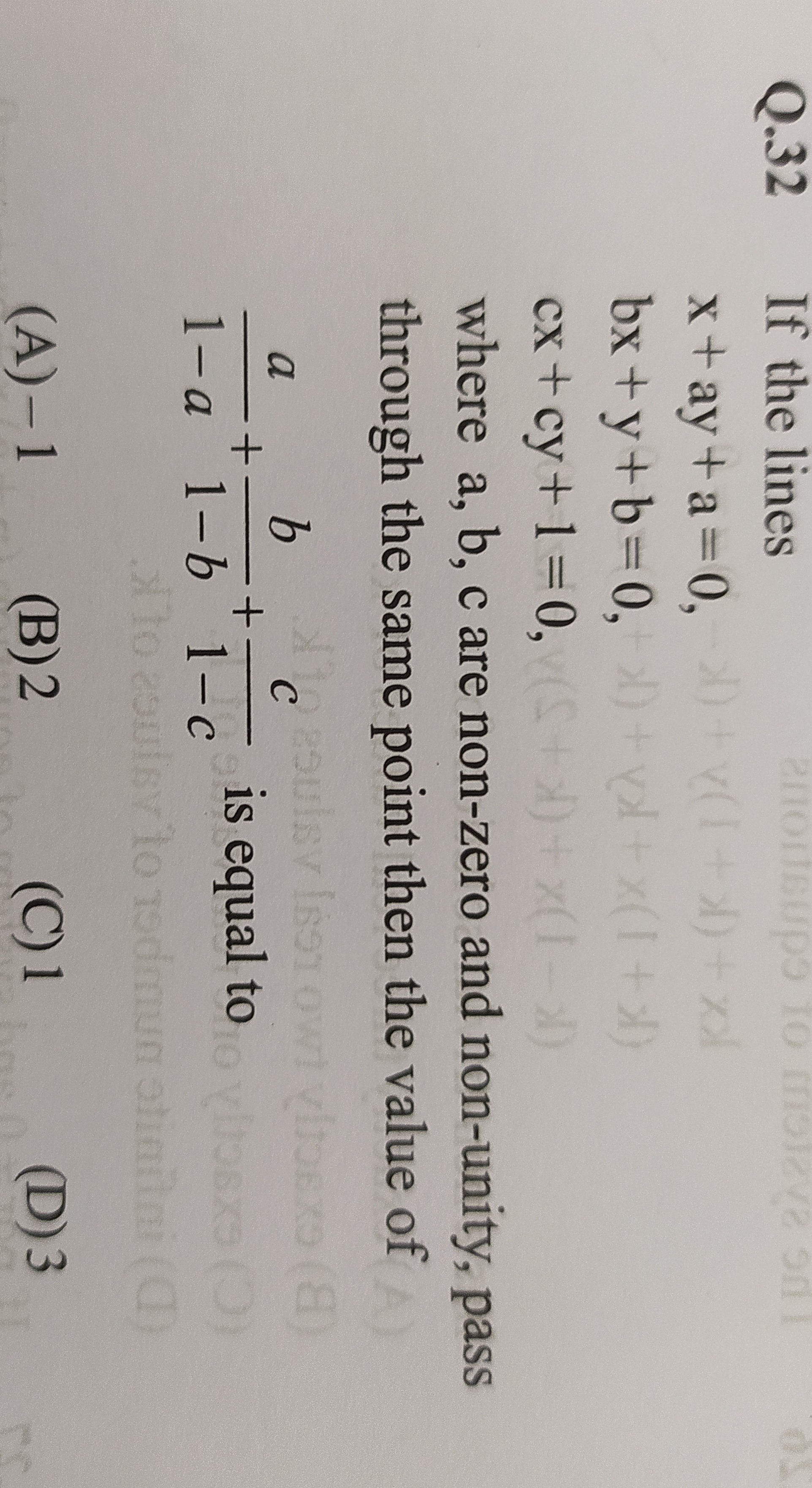Question
Question: If the lines x+ay+a=0, bx+y+b=0, cx+cy+1=0, where a, b, c are non-zero and non-unity, pass through...
If the lines
x+ay+a=0, bx+y+b=0, cx+cy+1=0,
where a, b, c are non-zero and non-unity, pass through the same point then the value of
1−aa+1−bb+1−cc is equal to

A
-1
B
2
C
1
D
3
Answer
-1
Explanation
Solution
Given the lines
L1:x+ay+a=0,L2:bx+y+b=0,L3:cx+cy+1=0,concurrent at a point, their coefficients (in homogeneous form) must satisfy the determinant condition:
1bca1cab1=0.Expanding the determinant along the first row:
11cb1−abcb1+abc1c=0.Calculating the 2×2 determinants:
1cb1=1−bc,bcb1=b(1−c),bc1c=c(b−1).Thus, the condition becomes:
1−bc−ab(1−c)+ac(b−1)=0.Rearrange to express a:
1−bc+a[−b(1−c)+c(b−1)]=0.Note that:
−b(1−c)+c(b−1)=−b+bc+cb−c=2bc−b−c.Thus,
1−bc+a(2bc−b−c)=0⟹a=2bc−b−cbc−1.Now, we need to evaluate:
S=1−aa+1−bb+1−cc.Compute 1−aa:
Given a=2bc−b−cbc−1, then
1−a=1−2bc−b−cbc−1=2bc−b−c(2bc−b−c)−(bc−1)=2bc−b−cbc−b−c+1.Recognize that:
bc−b−c+1=(b−1)(c−1).Thus,
1−aa=2bc−b−c(b−1)(c−1)2bc−b−cbc−1=(b−1)(c−1)bc−1.Also observe:
1−bb=−b−1b,1−cc=−c−1c.So,
S=(b−1)(c−1)bc−1−b−1b−c−1c.Get a common denominator (b−1)(c−1) for the last two terms:
b−1b=(b−1)(c−1)b(c−1),c−1c=(b−1)(c−1)c(b−1).Thus,
S=(b−1)(c−1)bc−1−b(c−1)−c(b−1).Expanding the numerator:
bc−1−[bc−b]−[bc−c]=bc−1−bc+b−bc+c=b+c−1−bc.Notice that:
b+c−1−bc=−(1−b−c+bc)=−(1−b)(1−c).Also, note that:
(b−1)(c−1)=(−(1−b))⋅(−(1−c))=(1−b)(1−c).Finally,
S=(1−b)(1−c)−(1−b)(1−c)=−1.So, the value is −1.
